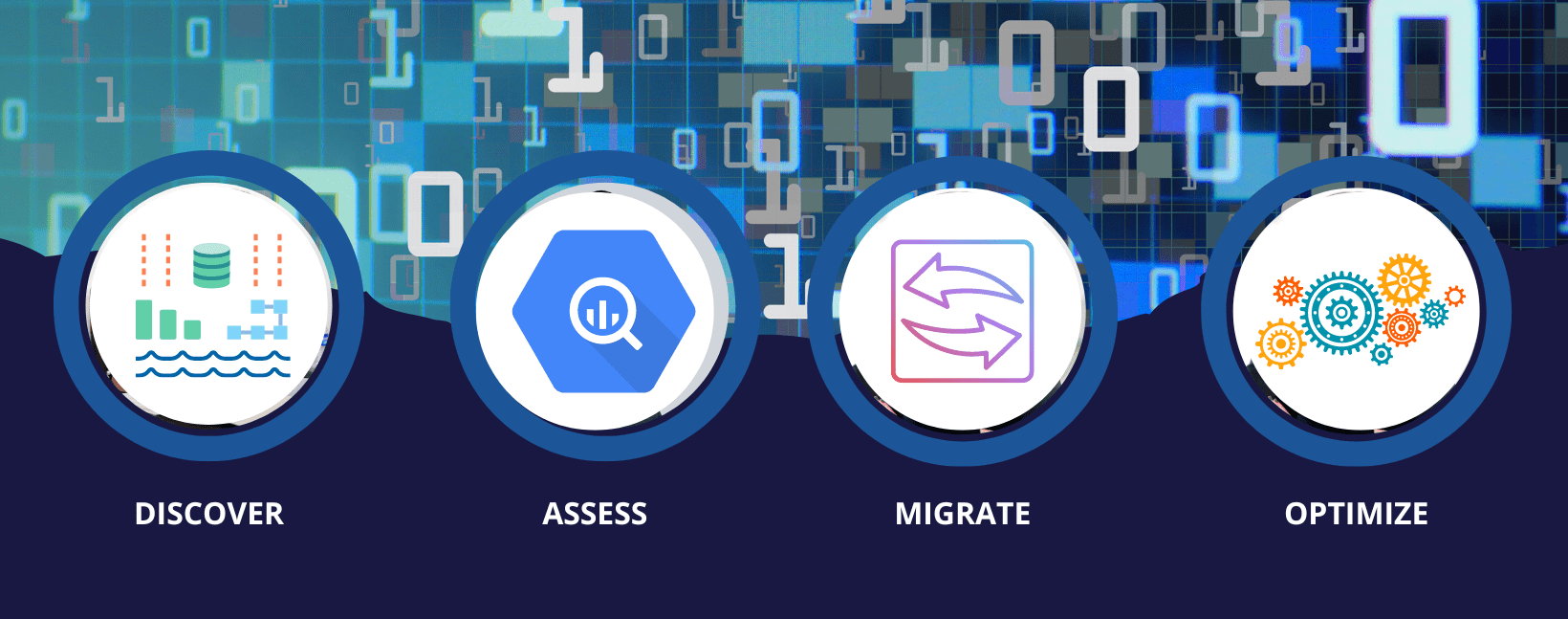SQL data migration is defined as moving data to or from an SQL Server database. The migration process may appear straightforward at first, but it can be very challenging, especially when migrating a large volume of enterprise data. Many companies use data migration tools to carry out this process.
When we look at it in terms of ETL (Extract, Transform, Load) process, data migration involves pulling data from one system, transforming and aggregating it as necessary, and loading it into the destination system. This tells us that SQL Server migration also involves multiple phases, each of which comes with its own set of challenges.

This guide will go through the SQL migration process and describe how data migration tools, such as Astera, can simplify the process.
What is Data Migration in SQL?
Database migration in Microsoft SQL Server involves moving data to or from an SQL server. The circumstances that require users to either move or restore databases may include:
- Making a move to a new server.
- Transferring to a different instance of SQL.
- Creating a development server.
- Restoring a database from backup.
The Process
Migrating databases typically involves four significant stages as follows:
- Extract: Extracting data from the source database or a source server and sending it to a staging or intermediary server.
- Standardize: Matching the source data to the destination formats could cater to compatibility issues with the data type or ensure that metadata correctly reflects the data.
- Aggregate and Cleanse: Perform any aggregation tasks to de-duplicate records and/or calculate derived fields.
- Load: Transferring the cleansed, aggregated, and transformed data into the target database.
These stages must be carefully planned and tested before execution to ensure that data is migrated accurately. Unfortunately, the entire process can be quite time-consuming, especially if you build an in-house process to migrate SQL Server from scratch as you will need to write your code and stored procedures. Therefore, a better approach is to use an enterprise-grade data migration tool that can save you time and reduce the error probability.
What are the Different SQL Migration Methods?
There are multiple ways to go about migrating an SQL Server database:
Migrating an SQL Server Database manually via scripting
The traditional method to migrating databases involves writing SQL scripts. The steps include:
- Creating source database backup
- Extracting source schema via SQL scripts
- Extracting data from the database
- Connecting to the target server and executing the migration script
The manual process is error-prone and time-consuming, even when automated.
Backup and restore using SQL Server Management Studio (SSMS)
This method allows you to migrate an existing SQL Server database in SSMS, which is Microsoft’s built-in tool for managing SQL Server databases. The process involves backing up an existing database, connecting to a target SQL Server instance, and restoring the database.
Such a migration works when the source and target environments are similar. The downside to this method is that it’s time-consuming, especially in cases where the databases are very large, and network bandwidth is limited. Since the migrated SQL database is simply a restored version of a backup, there’s no way to incorporate any data transformations during the migration.
Migrating SQL Server Database to Azure
Given the widespread availability of cloud storage, you might want to migrate your SQL Server database to the cloud. One way to do so is to use Microsoft’s Azure database migration service (DMS). The process, however, is complex and tedious.
An alternative is to use data integration tools as they offer greater flexibility, broader functionality, and integration with other tools.
Migrating SQL Server Database using Data Integration Tools
The most straightforward approach to migrating SQL Server database is via specialized data integration tools with robust features. These tools offer built-in data connectors that enable users, including business users, to connect to the source database, map data, connect to the target database, and migrate data. The entire process can be completed without writing a single line of code.
If your teams have a mix of business and technical users, consider investing in a dedicated data migration tool to improve operational efficiency.
A Step-By-Step Guide to Data Migration in Astera
This section will explain through a use case how an SQL migration process can be carried out in an SQL data migration tool, Astera Data Pipeline Builder. The hypothesis is that the user has already set up the schemas/data definitions in the destination instance.
![sql data migration process explained]()
SQL Data Migration in Astera Data Pipeline Builder
- Add a connector for the source, SQL Server database, by adding the connection parameters (access credentials and database name). This can be an on-premises SQL Server database, as illustrated in the example.
- If you need to apply any transformations or aggregations, pick the suitable function, and add it to your migration pipeline. You can use these transformations to perform several functions, such as grouping data, calculating derived fields, or de-duplicating data. You can also use these to clean and translate your data in the format required by the target SQL server.
- Add a database destination connector for where you are migrating your data. In this example, our destination server is the SQL Server database.
- Create data mappings between the two SQL Server databases. Astera provides you with a user-friendly and interactive interface for doing this where you can drag-and-drop the mapping from the source to the destination. This makes it convenient for you to move SQL Server data between the two instances without renaming columns.
This is just one example of how Astera can serve as your data migration assistant and help simplify the process. You can perform a variety of other migration tasks with it as well, such as modifying the data in the SQL server database, transferring it to a different relational database system (such as SAP HANA or MariaDB), or setting up your organization’s data warehouse.
What to Look for in an SQL Data Migration Tool?
We know that data migration involves ETL processes, so using a modern ETL tool to simplify this process makes sense. However, the next question is, how to find the right tool that meets your specific requirements?
Here is a list of features that you should look for when picking the right tool for SQL data migration:
- Built-in connectors: An enterprise ecosystem includes numerous cloud applications and database systems, so opting for a tool that supports pre-built connectors should be a preference. For instance, if you are using the Microsoft tier, then you should be looking for the SQL Server connector at the very least.
- Short learning curve: The purpose of using data migration tools is to reduce the overhead complexity and time of building an in-house solution. Therefore, the tool you choose should be easy to learn and use, ideally with a drag-and-drop GUI that simplifies your SQL Server migration pipeline.
- Cloud compatibility: You should be able to access and work on your data pipelines from anywhere at any time, so the tool should support REST API architecture.
- Multi-purpose: A good tool should not be limited to just data migration tasks but also be flexible for a range of ETL processes and integration tasks, such as cleansing source data or loading it from APIs/third-party services.
SQL Data Migration with Astera Data Pipeline Builder
Businesses undertake SQL migration projects for several reasons. For example, it could be to build a new data warehouse, overhaul existing systems, or upgrade their database systems. Ensuring that databases and relevant data are migrated properly between the source and target systems is critical for the success of such projects. It is essential to plan and carefully test your migration to ensure no data loss.
Astera offers an AI-powered, cloud-based migration tool that streamlines every stage of your data migration procedure from preparation to integration to loading. With powerful features such as cloud-based data prep, AI-driven semantic mapping, and support for all data latencies, it can become your data migration assistant for your next major migration project.
If you are looking for an SQL data migration tool, request a 14-day free trial for Astera Data Pipeline Builder!
SQL Data Migration: Frequently Asked Questions (FAQs)
What is SQL data migration?
SQL data migration is the process of transferring data from one SQL-based system to another. This could involve moving data between different versions of SQL databases, migrating to a new database platform, or consolidating data from multiple sources.
Why is SQL data migration important for businesses?
SQL data migration is crucial for businesses looking to modernize their databases, improve performance, consolidate data sources, or migrate to cloud-based solutions. It ensures data consistency and integrity while supporting business growth.
What are the common challenges faced during SQL data migration?
Some common challenges include:
- Data loss or corruption
- Schema incompatibilities
- Performance issues
- Downtime during migration
- Ensuring data integrity and validation
How do you plan a successful SQL data migration project?
A successful SQL data migration project involves:
- Assessing the current database and data dependencies
- Defining migration goals and scope
- Choosing the right migration strategy (ETL, direct transfer, replication, etc.)
- Performing data profiling and cleansing
- Running migration tests before execution
- Validating data post-migration
What are the best practices for SQL data migration?
- Plan the migration with a clear roadmap
- Backup all data before starting
- Test the migration process with a small dataset first
- Monitor performance and optimize queries
- Perform post-migration validation
How does Astera Data Pipeline Builder facilitate SQL data migration?
Astera Data Pipeline Builder simplifies SQL data migration with an AI-powered, no-code, drag-and-drop interface that allows users to move and transform data without writing complex scripts. It automates ETL processes, ensuring smooth data transfer.
What are the key features of Astera Data Pipeline Builder for SQL data migration?
- No-code, visual interface
- Automated ETL workflows
- Data validation and cleansing tools
- Scalability for large datasets
- Support for multiple SQL database platforms
What is the typical process flow for SQL data migration?
- Extract – Retrieve data from the source SQL database
- Transform – Clean, format, and modify data as needed
- Load – Insert the transformed data into the target SQL database
- Validate – Ensure data integrity and completeness
How can data integrity be ensured during SQL data migration?
- Use data validation rules before and after migration
- Compare row counts and checksums
- Perform sample data verification
- Use automated reconciliation tools
What are the differences between manual and automated SQL data migration methods?
- Manual migration: Involves writing SQL scripts, which is time-consuming and error-prone.
- Automated migration: Uses ETL tools (like Astera) to streamline and validate the process, reducing the risk of errors.
How do you validate data after SQL migration?
- Use SQL queries to compare data before and after migration
- Check for missing or duplicate records
- Use data profiling tools for quality assessment
How can downtime be minimized during SQL data migration?
- Use incremental migration instead of full data loads
- Schedule migration during off-peak hours
- Implement database replication for real-time synchronization
Authors:
![]() Tehreem Naeem
Tehreem Naeem


